 [Forty years ago this month I published the polemic that follows.
[Forty years ago this month I published the polemic that follows.
Today, with the Museum of Modern Art’s Department of Photography simply another such entity — although a high-profile one — among dozens if not hundreds of others, it has become difficult if not impossible to evoke and convey effectively the hegemonic influence that this department and its then-curator wielded in its heyday. So, for those under the age of 50, I can only say that you’ll have to imagine it and take my word for it.
Self-evidently, I considered it necessary to make this statement and take this position on the record at that time. Among other things, it serves as an example of what in German they call Ausstellungskritik, which translates literally as “exhibition criticism.” That’s not particularly helpful, even when I add that the Germans distinguish it from Kunstkritik, which translates as “art criticism.” So, for my purposes, I consider “institutional critique” as a more accurate rendering of the meaning of Ausstellungskritik.
As distinct from textual criticism, which concentrates on the artwork itself, institutional critique functions as contextual criticism, addressing the forces that bring that particular work before the public. In my own writing I move between those two poles as (in my opinion) the situation demands.
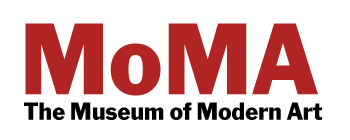 Two months hence, the Museum of Modern Art’s Department of Photography will host a session of its long-running series, Forum on Contemporary Photography, centered around my work. Moderated by Roxana Marcoci, this event’s respondents will include Vince Aletti, curator, writer and photography critic; Dawoud Bey, artist and Professor of Art at Columbia College Chicago; Sarah Meister, Curator, The Museum of Modern Art; Alison Nordström, independent scholar/curator of photographs and Museum Associate, Peabody Museum Harvard University; and Stanley Wolukau-Wanambwa, photographer, writer, and editor of The Great Leap Sideways. It will take place on Wednesday, September 19, 2018 from 6:00 to 8:00 PM in the Founders Room. If you wish to attend, email Ms. Marcoci.
Two months hence, the Museum of Modern Art’s Department of Photography will host a session of its long-running series, Forum on Contemporary Photography, centered around my work. Moderated by Roxana Marcoci, this event’s respondents will include Vince Aletti, curator, writer and photography critic; Dawoud Bey, artist and Professor of Art at Columbia College Chicago; Sarah Meister, Curator, The Museum of Modern Art; Alison Nordström, independent scholar/curator of photographs and Museum Associate, Peabody Museum Harvard University; and Stanley Wolukau-Wanambwa, photographer, writer, and editor of The Great Leap Sideways. It will take place on Wednesday, September 19, 2018 from 6:00 to 8:00 PM in the Founders Room. If you wish to attend, email Ms. Marcoci.
To provide some jumping-off points for that discussion, I created An A. D. Coleman Reader, a book-length selection of my writings from 1968 through the present, available here for free downloading in the form of a PDF file. It includes the following essay, plus other examples of my approach to institutional critique, as well as an assortment of other published work of mine.
Part 2 appears below; click here for part 1. — A.D.C.]
•
On the Subject of John Szarkowski:
An Open Letter to the Directors and Trustees of the Museum of Modern Art (cont’d)
… This [Szarkowski’s simultaneous denial of and exercise of his influence] in itself is a major issue. It is compounded by the rigidity and narrowness of Szarkowski’s esthetic. The strictures of his vision of photography are so pronounced and self-reflexive that they can be readily summed up. As I wrote in 1973, “It is restricted almost entirely to the documentary genre, centered around Walker Evans as the first conscious articulator thereof.”[1]
Szarkowski has made no bones about this. He has enunciated it clearly in his writings and lectures, in addition to upholding it consistently in his curatorial leanings. He has been notably unsympathetic to: imagery subjected to visible handwork or post-exposure manipulation; color imagery, whether “straight” or applied; directorial imagery; mixed-media work; and serial imagery, among other forms and modes.
What he has sponsored to date offers, in aggregate, a severely reductivist formalism as the essence of creative photography. This has been so steadfastly dependable and deliberate that [Colin] Westerbeck’s characterization of the curator as a man of “catholic tastes” who “does not make judgments” is insupportable, indeed laughable — rather like praising Thomas Wolfe for taciturnity.
Reporting on a talk Szarkowski gave in late 1975, I noted that he “defined briefly the various stances a curator can take toward a medium, dismissed most of them as beneath his consideration, and announced that the highest and most rigorous form of curatorship was autocratic, elitist, and appropriately limited by the curator’s own ideas and taste patterns, the narrower the better.”[2]
This is not in itself objectionable. The medium is diverse, vital, and energetic enough to sustain a wide span of critical and curatorial stances, including Szarkowski’s. Were he the director of photography at any other contemporary art museum, I would not be writing this letter, and indeed might be looking forward to the recurrent challenge of severing the bonds with which his esthetic inhibits the medium’s full development.
But that is not the situation at all. In this case, the curator exercising those prerogatives in that fashion is, in essence, the sole hand on the helm of the most powerful institution in the world of contemporary photography. There is a great deal of work — much of it important, even seminal — which he has rejected out of hand (or ignored, which amounts to the same thing). He has discriminated not only qualitatively but generically. And the decisions made on the basis of such prejudice have demonstrable, long-term, substantial effects on the medium’s evolution. Those effects are detrimental (I would go so far as to call them deadening); they extend far beyond the walls of the museum itself.
Therefore let us not pretend that we are merely discussing the philosophical ramifications of “one man’s opinion” in a democratic context. We are in fact dealing with an unhealthy concentration of power, wielded by a man whose approach to the responsibility thereof is a coy denial of its existence.
That denial is, in effect, an abdication of that responsibility. It epitomizes Szarkowski’s inadequacy to the task at hand, but it also forces us to acknowledge that the problem goes beyond the specifics of his shortcomings. The ailment we have diagnosed is that very concentration of power itself, power which would exist to be used and abused by anyone who headed your department of photography. That power is an instrument of policy for which the museum itself must be held accountable.
The ailment, then, is the museum’s. So, consequently, is the problem; and so, presumably, is the solution. In that regard, I would offer the following proposal.
The time has come for a fundamental restructuring of your department of photography.
The first step in that process should be the dividing up of the department’s power and responsibility between at least two full-time curators of approximately equal rank. Such a situation did exist, during Peter Bunnell’s tenure (1966-1972), when the department was at its most dynamic. Bunnell surely had his blind spots, no less than Szarkowski, but their approaches differed radically. The result was a more generous and far-sighted overview of the medium than the department has manifested before or since.
In addition to dividing up the department’s stewardship in this fashion, I would recommend the initiation of a regular program of guest curatorships, to diversify further the department’s presentations and to provide alternate ways of perceiving the medium.
The second step should be the museum’s insistence that the department take its power, influence, and responsibility seriously. This will require a new set of ground rules. The proper premise of these, I believe, is that it is incumbent upon the department to present to the public the broadest possible spectrum of creative work being done in all areas of the medium, rather than to “follow” (which means, in effect, to endorse) one particular track.
This would mean more survey shows, and would thus mandate a decrease in one-person exhibits. That shift in emphasis would be all to the good. The department would have to be far more careful in selecting candidates for solo shows; this, inevitably, would mean a rise in the level of age and accomplishment of those so featured. As a result, we would be spared the premature exposure of photographers still in their creative adolescence. Over the past decade the department has given a great many one and two-person shows to people in their late twenties and early thirties. In most of these cases, the photographers had neither established bodies of work nor major critical reputations to validate this spotlighting. Such king-making is dangerous all around — for the artists, for the department, for the museum, for the public, and for the medium itself.
Another ground rule should be a clear policy of disengagement of all departmental personnel from formal and informal advisory functions in relation to other institutions, particularly when grants, jobs, and other economic aspects of photographers’ lives are involved. The museum’s stamp of approval, transmitted through the department’s exhibition, purchase, and publication of work, is ample testimony to its regard for a photographer’s achievement. Any further career assistance to individuals, especially when rendered sub rosa, is a form of power-brokering. It severely undercuts the department’s credibility and integrity; it compromises not only the department but the museum as a whole.
I realize this implies that it is incumbent upon the department to examine and evaluate carefully all the powers which accrue to it, and that the department should actually turn away from many of them. I believe that to be the only sound policy. The crisis confronting the department — and, through it, the museum — is precisely that too much power is now vested in it, so much too much that not even a curator who was uninfluential, catholic in his tastes, and universally respected could exercise it well and judiciously.
John Szarkowski is not that curator. But, whatever one might feel about him, it is apparent that his retirement is not the curative needed for the department’s well-being. Yet it must also be said that Szarkowski’s patronage practices tread ever closer to cronyism, in effect if not by intent. His esthetic, insufficient to the medium’s current stage of evolution, verges on stagnation. His tenure at MoMA, which has been distinguished in many ways, now runs the risk of ending in increasingly acrimonious confrontation with practitioners of that very medium to which he has committed so much of his life.
To retire under such circumstances would be ignominious. To stonewall this situation to the bitter end would be unnecessarily ugly and painful for all concerned. Those are the predictable alternatives if the status quo is maintained.[3] Restructuring the department along the lines proposed above would revitalize it, and make it more fully responsive to the living medium for which the department serves as a main link to the larger art community and to the general public. It would be salutory for John Szarkowski too: it would challenge him as an administrator and as a curator. And it would honor him, rightly, by acknowledging that he has been instrumental in creating something much, much larger than himself.[4]
Sincerely yours,
/s/ A. D. Coleman
Staten Island, New York
July 1978
[First published in Picture Magazine, Issue #8 (Vol. 2, no. 2), 1978. Reprinted in Coleman, A. D., Light Readings: A Photography Critic’s Writings, 1968-1978 (second edition, University of New Mexico Press, 1998), pp. 287-94.]
(Part 1 I 2)
•
[1] In Coleman, A. D., “Photography: Recent Acquisitions,” Light Readings: A Photography Critic’s Writings, 1968-1978 (Oxford University Press, 1979; second edition, University of New Mexico Press, 1998), p. 159.
[2] In Coleman, A. D., “Where’s The Money?” Light Readings, p. 219.
[3] John Szarkowski retired as Director of the Department of Photography on July 1, 1991. After a widely publicized one-year search he was replaced, from within, by Peter Galassi.
[4] Let me express my thanks here to Don Owens, then publisher and editor of Picture Magazine, for providing me with the opportunity to make this statement. I should also add that, entering into the spirit of the piece, Owens sent copies of the issue to MoMA’s Board of Directors, Board of Trustees, and the entire curatorial staff. He received no answers to the letter, nor even acknowledgement of receipt of the issues, from anyone.
•
 Special offer: If you want me to either continue pursuing a particular subject or give you a break and (for one post) write on a topic — my choice — other than the current main story, make a donation of $50 via the PayPal widget below, indicating your preference in a note accompanying your donation. I’ll credit you as that new post’s sponsor, and link to a website of your choosing. Include a note with your snail-mail address (or email it to me separately) for a free signed copy of my 1995 book Critical Focus!
Special offer: If you want me to either continue pursuing a particular subject or give you a break and (for one post) write on a topic — my choice — other than the current main story, make a donation of $50 via the PayPal widget below, indicating your preference in a note accompanying your donation. I’ll credit you as that new post’s sponsor, and link to a website of your choosing. Include a note with your snail-mail address (or email it to me separately) for a free signed copy of my 1995 book Critical Focus!
 But wait! There’s more! Donate now and I’ll include a copy of The Silent Strength of Liu Xia, the catalog of the 2012-13 touring exhibition of photos by the dissident Chinese photographer, artist, and poet, currently in her sixth year of extralegal house arrest in Beijing. The only publication of her photographic work, it includes all 26 images in the exhibition, plus another 14 from the same series, along with essays by Guy Sorman, Andrew Nathan, and Cui Weiping, professor at the Beijing Film Academy.
But wait! There’s more! Donate now and I’ll include a copy of The Silent Strength of Liu Xia, the catalog of the 2012-13 touring exhibition of photos by the dissident Chinese photographer, artist, and poet, currently in her sixth year of extralegal house arrest in Beijing. The only publication of her photographic work, it includes all 26 images in the exhibition, plus another 14 from the same series, along with essays by Guy Sorman, Andrew Nathan, and Cui Weiping, professor at the Beijing Film Academy.


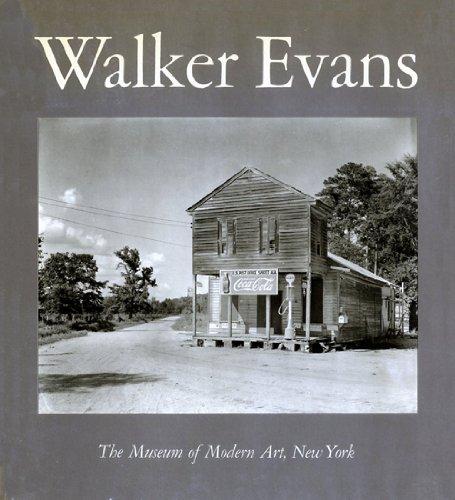
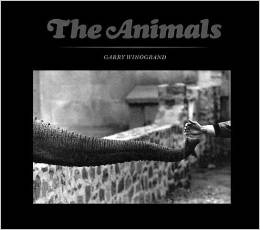

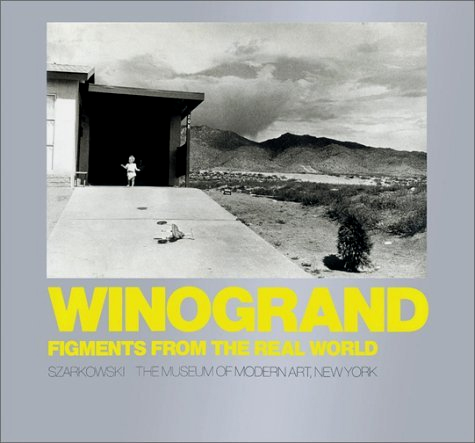
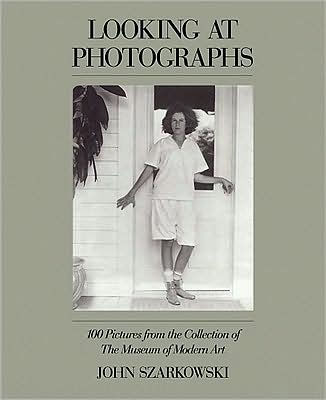




Given the widespread acceptance of photography in the interval by major institutions as a medium to display and possibly even collect, I wonder what further recommendations, or modifications you might make to your suggestions.
As I indicate in my prefatory comment to this piece, the situation of photography has changed so dramatically since I published it four decades ago that the central issue I raise — the severe imbalance of institutional power within the field at that time — no longer pertains. No single institution today exercises anything resembling what the MoMA Dept. of Photography once wielded as influence.
And the policies and practices of that particular department have changed radically since my critique appeared. It employs multiple curators. Its exhibitions range more widely over activity in the field than they did under Szarkowski’s stewardship. They cover more approaches to the medium, a much greater diversity of practitioners, a wider engagement with the full field of ideas. As Sarah Meister acknowledged to me during a conversation last year, subsequently the department revised and/or relinquished many of the behaviors that I challenged in this assessment. (I have no reason to believe that this article played any part in that evolution.)
So I wouldn’t actually feel the same need to write and publish this essay today as I did at the time, in regard to the Modern’s Dept. of Photography per se. However, if you remove the MoMA-specific aspects of the piece, I’d like to think that its core concerns — the responsibility of a major museum or museum department to inform and educate its audience(s) by offering a reasonable cross-section of activity in the various creative media it showcases; the maintaining of a moral compass in considering the implications of corporate, governmental, and private sponsorship; and the eschewing of various forms of favoritism — remains good advice today, and will do so in the future.